 W
WThe Amsterdam City Archives preserves documents pertaining to the history of Amsterdam and provides information about the city. With archives covering a shelf-length of about 50 kilometres, the Amsterdam City Archives is the largest municipal archive in the world.
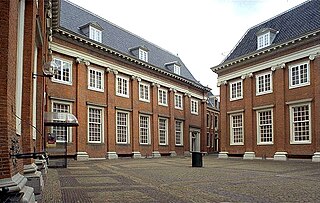 W
WThe Amsterdam Museum, until 2011 called the Amsterdams Historisch Museum, is a museum about the history of Amsterdam. Since 1975, it is located in the old city orphanage between Kalverstraat and Nieuwezijds Voorburgwal.
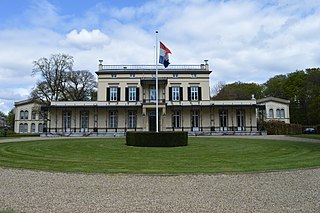 W
WBronbeek is a former Royal palace in Arnhem, Netherlands. It is now a museum and a home for elderly soldiers.
 W
WThe Drents Museum is an art and history museum in Assen, Drenthe, in the Netherlands. The museum was opened in 1854. It has a collection of prehistorical artifacts, applied art, and visual art. The museum also has temporary exhibitions. In 2013, it had 227,000 visitors.
 W
WMuseum Flehite is the historical museum of Amersfoort and Eemland in the Netherlands. The museum was founded in 1880 by the "Oudheidkundige Vereniging Flehite" (1878). In 1890, the museum moved to the first of the current three-part building on the Breestraat (Breestreet). Since 1976, the museum has been managed by a separate organization.
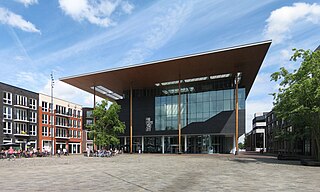 W
WThe Fries Museum is a museum in Leeuwarden, the Netherlands. It has won the Global Fine Art Award which is sometimes nicknamed the Museum-Oscar.
 W
WHet Loo Palace is a palace in Apeldoorn, Netherlands, built by the House of Orange-Nassau.
 W
WThe Historisch Museum Den Briel is a Dutch museum located in Brielle. The museum was previously known as the Trompmuseum, after Brielle-born Maarten Tromp who defeated the Spanish fleet in the Eighty Years' War.
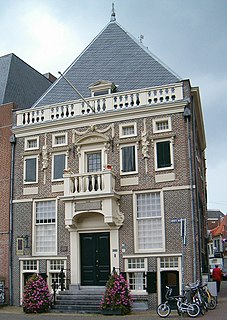 W
WThe Hoofdwacht is a historically important rijksmonument. It was built in the 13th century and it is considered the oldest building in Haarlem, Netherlands. It has served as a printshop for Coornhert, as a temporary council meeting location across from City Hall and even as a jail. It is located on the Grote Markt across from the St. Bavochurch.
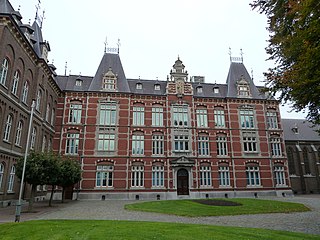 W
WThe Internationaal Museum voor Familiegeschiedenis is a museum located in the former Ursuline Convent in Eijsden, Netherlands. As a museum with a focus on genealogy and family history, it is the first museum of its kind in the world.
 W
WThe Joods Historisch Museum, part of the Jewish Cultural Quarter, is a museum in Amsterdam dedicated to Jewish history, culture and religion, in the Netherlands and worldwide. It is the only museum in the Netherlands dedicated to Jewish history.
 W
WThe Leiden American Pilgrim Museum is a small museum in the Dutch city of Leiden dedicated to the Pilgrim Fathers. These Separatists or English Dissenters were religious refugees who had fled England to Amsterdam in 1608 and moved to Leiden the next year. They lived and worked in that city for about 12 to 20 years. In 1620, their emigration began. They left Leiden by canal, going to Delfshaven where they embarked on the Speedwell, which took them to Southampton. But the Speedwell proved leaky and had to be sold, so they transferred to the Mayflower. The Mayflower undertook the famous voyage to New England in 1620 alone. In the 19th century the colonists' first harvest festival after their arrival at Plymouth Colony was identified as the origin of the annual Thanksgiving celebration in the United States.
 W
WThe Limburg Museum is a cultural-historical museum in the Julianapark in the Dutch city of Venlo. The Limburg Museum, the Discovery Center Continium in Kerkrade and the Bonnefantenmuseum in Maastricht are the three provincial museums in Limburg.
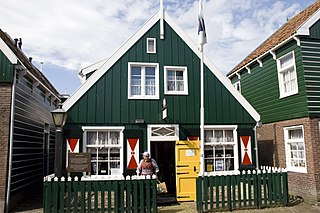 W
WMarker Museum is a local museum in the village of Marken in the Netherlands. The museum focuses on the history of Marken, including its fishing heritage.
 W
WMuseon is a museum for science and culture in The Hague, Netherlands. It has collections in the domains of geology, biology, archaeology, history, science and ethnology.
 W
WMuseum Haarlem is a city museum on Groot Heiligland 47, Haarlem, Netherlands, located across the street from the Frans Hals Museum. It shares its front door with the ABC Architectuurcentrum Haarlem, which is located next door. The museum is devoted to presenting and preserving the cultural history of Haarlem and the surrounding region.
 W
WThe Museum Rotterdam, until 2011 called the Historical Museum Rotterdam, is a museum about the history of Rotterdam. Since 2016, it is located in the Timmerhuis in the city center. The second location at the Coolhaven is called Museum Rotterdam '40-'45 NU.
 W
WOns' Lieve Heer op Solder is a 17th-century canal house, house church, and museum in the city center of Amsterdam, The Netherlands. The Catholic Church was built on the top three floors of the canal house during the 1660s. It is an important example of a "schuilkerk", or "clandestine church" in which Catholics and other religious dissenters from the seventeenth century Dutch Reformed Church, unable to worship in public, held services. The church has been open as a museum since 28 April 1888, and has 85,000 visitors annually.
 W
WMuseum de Oude Wolden, abbreviated as MOW, is a regional museum in the village of Bellingwolde in the Netherlands. The museum focuses on art and history of the regions of Oldambt and Westerwolde in the east of the province of Groningen.
 W
WStedelijk Museum Alkmaar is a city museum located in the center of Alkmaar on the Canadaplein. The museum is devoted to presenting and preserving the cultural history of Alkmaar and the surrounding region.
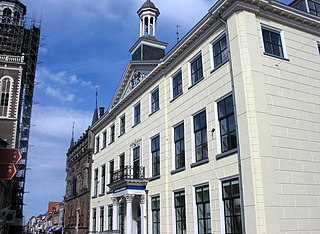 W
WThe Stedelijk Museum Kampen is a museum situated in the Old Town Hall of Kampen. The collection has four main topics: water, religion, justice and the House of Orange-Nassau. There are also five to six temporary exhibitions on contemporary art a year.
 W
WThe Ten Boom Museum is a museum in Haarlem, the Netherlands, dedicated to The Hiding Place, the subject of a book by Corrie ten Boom. The house where the museum is located was purchased and restored in 1983 by the Corrie ten Boom Fellowship, a non-profit 501(c) 3 corporation governed by a board of directors. Mike Evans serves as the chairman of the Board.
 W
WTresoar is the short name for the Frysk Histoarysk en Letterkundich Sintrum in Leeuwarden.
 W
WThe Utrecht Archives is a records department in the Dutch City of Utrecht. The Utrecht Archives manages the biggest and richest collection of documents about the history of the city and the province of Utrecht and its towns and people. With over 200 km of archives, images and 70.000 publications, the Archive is the major source of information for the history of Utrecht. The Utrecht Archives also disposes knowledge about legal supervision of archives in the field of analog as well as digital archive management. Besides, the national centre for ecclesiastical records is located in the Utrecht Archives together with the records of the Dutch Railways. The Utrecht Archives institution works closely together with other partners such as (local) governments, private individuals, partner institutions and other museums in Utrecht.
 W
WVeenkoloniaal Museum is a regional museum in the village of Veendam in the Netherlands. The museum shows the history of the peat district in Groningen. In 2008–2017, the museum had between 20,000 and 29,000 visitors annually.
 W
WVestingmuseum Oudeschans is a local museum in the village of Oudeschans in the Netherlands. The museum shows the history of the 16th-century fortification of Oudeschans and has a collection of archaeological findings.
 W
WThe Westfries Museum is a museum of regional history established in the Dutch city of Hoorn.